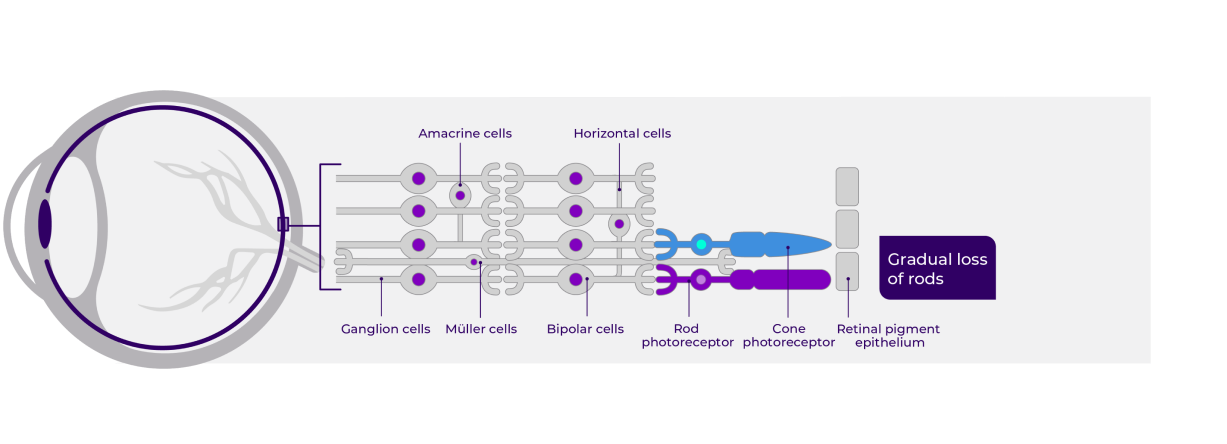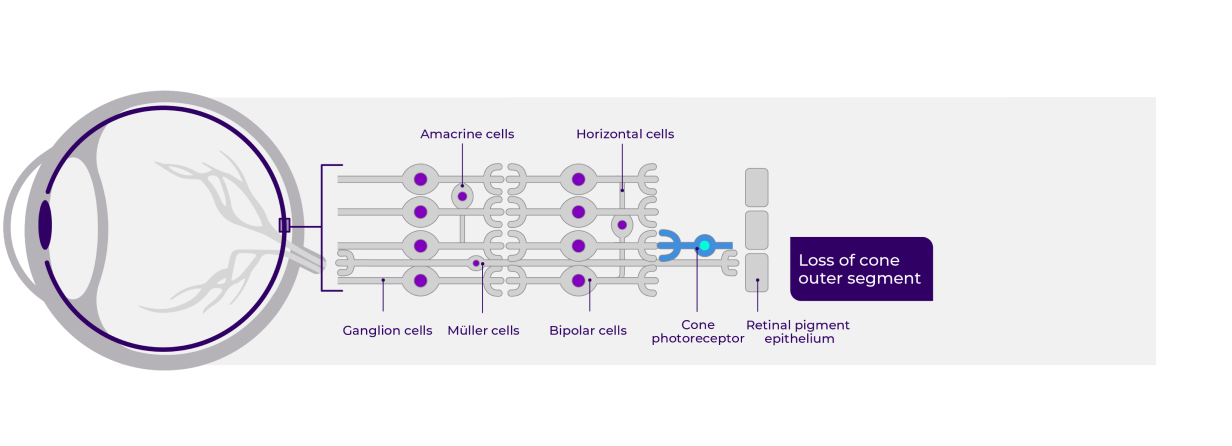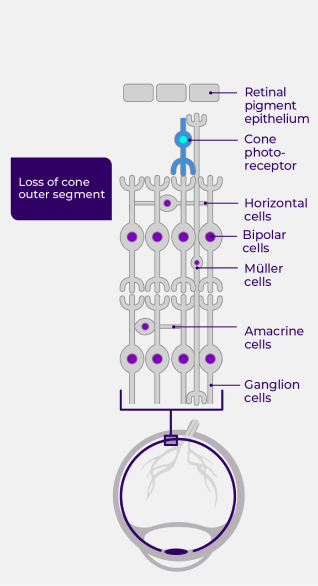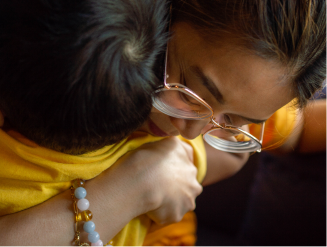A race against time in X-linked retinitis pigmentosa (XLRP), a subset of RP
The most common type of inherited retinal disease (IRD) is retinitis pigmentosa (RP), affecting 1 in 3,000-4,000 individuals worldwide. XLRP is among the most severe forms of RP.1-3
XLRP looks different for every patient. Often, symptoms appear early and get worse over time. The age of diagnosis is typically around childhood or early adolescence. By as early as the third or fourth decade of life, individuals with XLRP often reach legal blindness, and as of now, there is no known treatment available.1,3
Every year, patients with XLRP progressively lose3-5:
of their visual acuity†
of their visual field area‡
*XLRP is a subset of RP.
†Based on a 2007 longitudinal study of 113 patients with RPGR mutations. Visual acuity, visual field area, and electroretinogram (ERG) amplitudes were measured for an average of 9.8 years.
‡Data were collected from a 2020 study of more than 1,300 medical records from the Eye Institute of Alberta and the University of Alberta Hospital. A total of 275 kinetic visual field tests were collected from 52 subjects with retinitis pigmentosa over a period of up to 29 years.
See the rapid impact of XLRP1,3,6
As they lose their sight, patients may have to give up on a career that they had planned and choose a different path.
– Mark Pennesi, MD
View the anatomical impact7
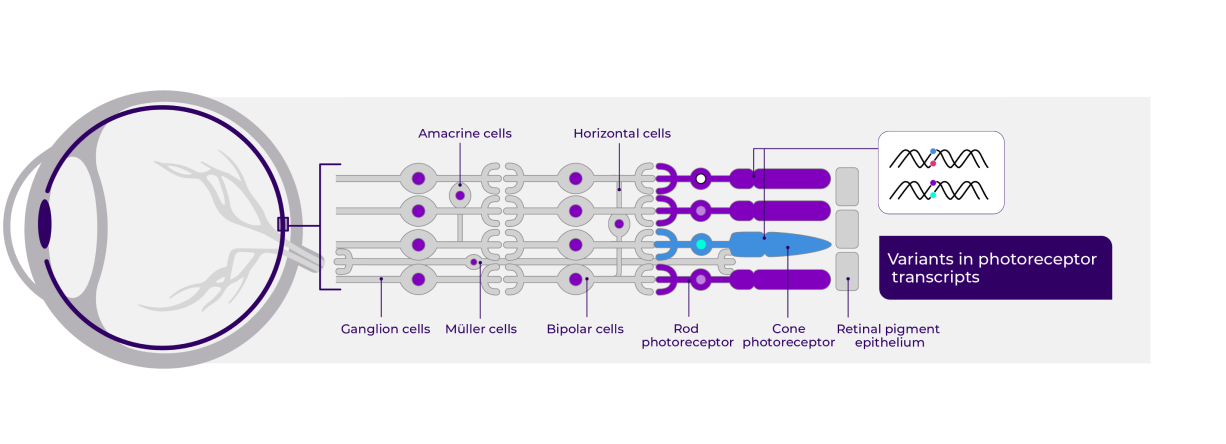
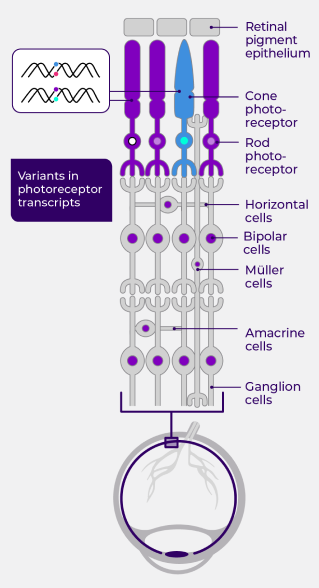
Variants in photoreceptors lead to degeneration7
XLRP* affects every part of your patients’ lives
Over time, XLRP can severely impact your patients’ functional vision, the usable vision they depend on to perform everyday activities. This can have a profound impact on their quality of life.3,8
- More frequent accidents, falls, bumping into objects3
- Loss of driving ability3
- Difficulty seeing at night3
- Struggles with reading3


I had night blindness. As I got into the work force, I had one employer say, 'I want to hire someone who can drive at night.'
– Gilesa, living with an IRD
Connecting those living with XLRP and their families with specialists and support such as advocacy groups, mental health services, low vision resources, and technology can make a difference.
Innovation in functional vision assessment
Patient-reported outcomes improve vision assessments
Traditional vision tests, such as visual acuity and visual field tests, don't accurately capture the impact of IRDs like XLRP on a patient's daily life. In recent years, patient-reported outcomes have become critical in assessing visual decline and quality of life for people with IRDs.2,3,9

Vision-guided mobility assessments: a new way to test functional vision
Like patient-reported outcomes, vision-guided mobility assessments (VMAs) bring deeper insight into the lived experience of XLRP patients. Unlike standard visual acuity tests, which primarily detect early signs of disease progression but offer limited insight into functional vision, VMAs assess a patient’s ability to use their remaining sight.8,10
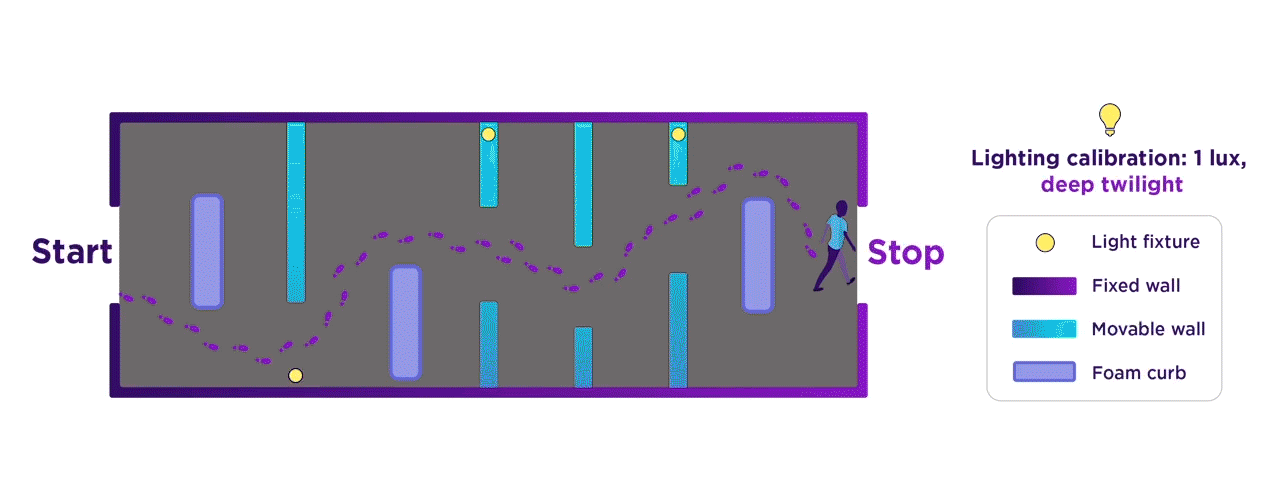
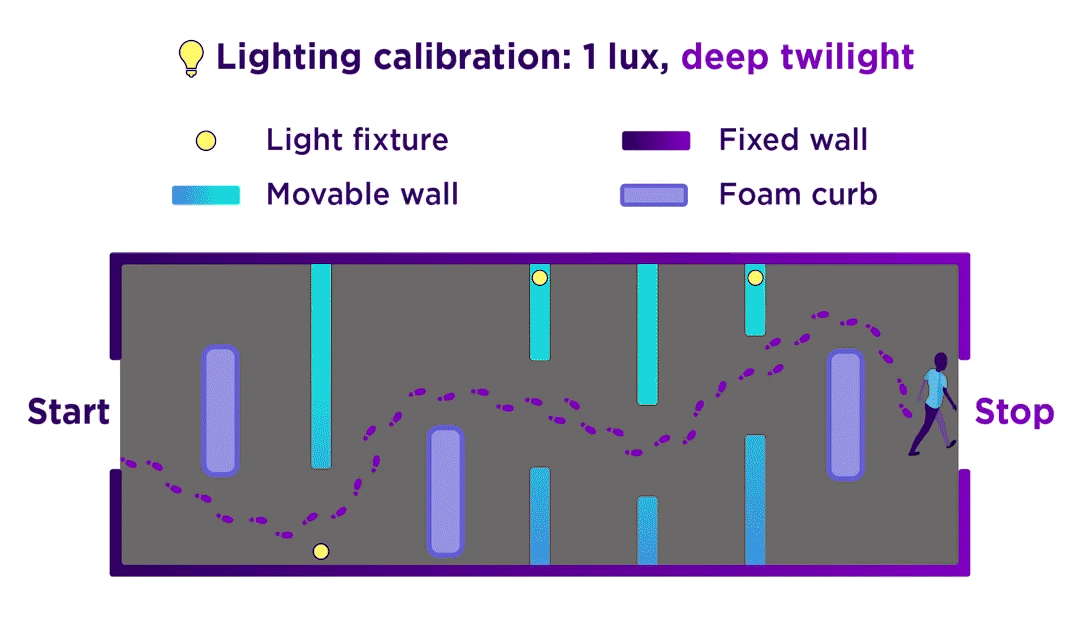
Animation depicts a type of VMA test used for functional vision assessment.
The VMA test immerses patients in a simulated everyday environment. They must navigate a course of obstacles under varying light levels, mirroring what they may encounter in the real world. This approach provides valuable data on how patients may use their vision to navigate their surroundings.10,11
Seeing the full impact of IRDs on functional vision
VMAs and patient-reported outcomes are currently being used and investigated in vision assessments and clinical trials. By integrating these assessments with more traditional tests, such as visual acuity and visual field tests, researchers gain a more comprehensive picture of how IRDs affect patients.9,10,12
Stay informed about upcoming trials integrating VMAs and patient-reported outcomes to better understand the impact of IRDs.
We need to consider how we measure success. Not just what is read on a chart, but how patients are able to get around in their environment.
– General ophthalmologist
Genetic testing may uncover new answers
Learn why testing and retesting appropriate patients can help you better support your patients with their eye care.13,14
Sponsored, no-charge genetic testing for your patients
Get access to genetic testing at no charge for your eligible patients who are suspected of having an IRD.





